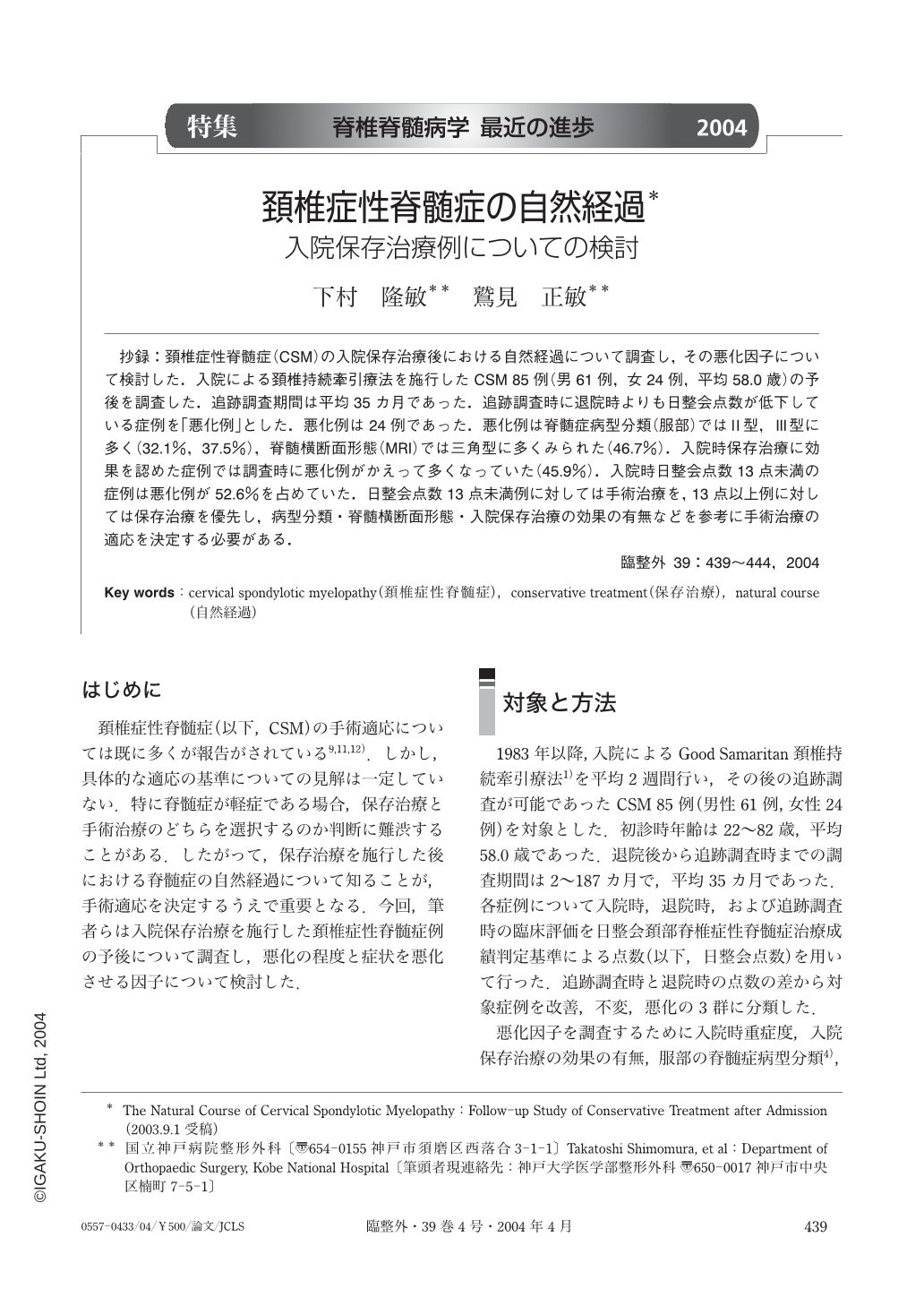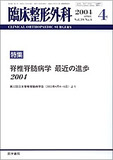Japanese
English
- 有料閲覧
- Abstract 文献概要
- 1ページ目 Look Inside
抄録:頚椎症性脊髄症(CSM)の入院保存治療後における自然経過について調査し,その悪化因子について検討した.入院による頚椎持続牽引療法を施行したCSM 85例(男61例,女24例,平均58.0歳)の予後を調査した.追跡調査期間は平均35カ月であった.追跡調査時に退院時よりも日整会点数が低下している症例を「悪化例」とした.悪化例は24例であった.悪化例は脊髄症病型分類(服部)ではⅡ型,Ⅲ型に多く(32.1%,37.5%),脊髄横断面形態(MRI)では三角型に多くみられた(46.7%).入院時保存治療に効果を認めた症例では調査時に悪化例がかえって多くなっていた(45.9%).入院時日整会点数13点未満の症例は悪化例が52.6%を占めていた.日整会点数13点未満例に対しては手術治療を,13点以上例に対しては保存治療を優先し,病型分類・脊髄横断面形態・入院保存治療の効果の有無などを参考に手術治療の適応を決定する必要がある.
Background:Since the surgical indication for cervical spondylotic myelopathy (CSM) have not been clearly defined, especially for mild or moderate myelopathy, it is important to know the natural course and outcome of CSM after conservative treatment in order to make the choice between conservative treatment and surgery.
Objective:To define the surgical indications for CSM and to identify the risk factors that adversely affect the natural course and outcome of CSM.
Methods:In this study 85 patients (61 men and 24 women, average age:58.0 years old) were treated conservatively by Good Samaritan traction for two weeks in our hospital. Clinical outcome was evaluated on the basis of the JOA score on admission, at the time of discharge, and during follow-up (average follow-up period:35 months), and the proportions of patients whose condition had deteriorated were determined. The risk factors for worsening myelopathy were investigated based on type of myelopathy (Hattori), the cross-sectional shape of the spinal cord on MR images, and outcome after conservative treatment.
Results:The condition of 24 (28.2%) of the 85 CSM patients had worsened at the follow-up examinations. Examination of the relationship between the JOA score on admission and subsequent deterioration of the patients'condition showed deterioration in 52.6%of the patients with scores below 13 points and in 21.2%of the patients with scores of 13 points or more. The risk factors were Hattori's type Ⅱ and Ⅲ myelopathy (9 of 28 patients and 15 of 40 patients, respectively), “triangular” deformity of the spinal cord on the MR image (14 of 30 patients), “improvement” after conservative treatment (17 of 37 patients).
Conclusion:Surgical treatment is indicated for patients who have a JOA score below 13 points. Conservative treatment is recommended for patients with scores of 13 points or more. The risk factors for worsening myelopathy were Hattori's type Ⅱ and Ⅲ myelopathy, “triangular” deformity of the spinal cord on the MR image, and“improvement” after conservative treatment.

Copyright © 2004, Igaku-Shoin Ltd. All rights reserved.


